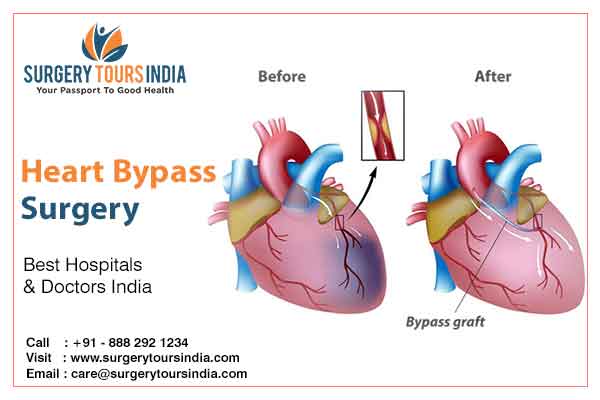
Due to recent advancements in surgical equipment and techniques, the surgeons are now able to perform coronary artery bypass surgery in a less stressful manner. Such kinds of surgeries or procedures are known as 'minimally invasive'. The best feature of Minimally invasive cardiac surgery or MICS is that they involve smaller incisions or evading the use of heart-lung machine, or the use of both the techniques.
However, it is only on selective patients that the surgeons decided to perform minimally invasive bypass surgery as it is appropriate on them. MICS procedures are most of the times performed on a beating heart or by making a smaller incision. Currently, ground-breaking work is also being around the world to develop such techniques so that surgeons would be able to perform beating-heart bypass surgeries through 'keyhole' incisions.
In contrast to conventional or traditional surgeries where 10-12 inch incision is made and the heart of the patient is kept on the heart-lung machine, in latest minimally invasive procedures, the surgeons may not place the heart on the machine and can perform the surgery through 3-5 inch incition between the ribs or make a few small incisions. 'Keyhole' or 'endoscopic' bypass surgeries are still in developmental phase and can be performed by making small incisions measuring 1-2 inches.
Commonly known as bypass surgery, Coronary Artery Bypass Grafting (CABG) is a safe and an effective way of surgically taking care of the symptoms of the coronary artery disease. In this process, the blood is re-routed around a block that was created in the coronary artery, by making another path for blood to carry oxygen and important nutrients to the muscle of the heart.
Portions of other vein or artery is used to create grafts for the body of the patient. The most vessel that is used for this purpose is greater saphenous veins in the leg or the internal mammary arteries inside the chest wall. These vessels are termed as 'spares' as the flow of blood does not gets affected if they are removed. But, sometimes the radial artery in the arm is also used for grafting. The life of grafts is mostly around 10 to 12 years.
It is said that minimally-invasive bypass surgeries have similar results as traditional bypass surgeries and they easily restore normal delivery of nutrients and oxygen to the heart and sufficient flow of blood. However, they also have certain benefits like working through smaller incisions. Here are some more advantage of minimally-invasive bypass surgery:
Shorter hospital stay: In this process, the pain caused to the patient is less and he is able to cough or breathe easily after the surgery. In comparison to CABG surgery when the patient generally has to stay in the hospital for 5 to 10 days, one has to stay just for 2 to 3 days in the hospital.
Quicker recovery: Use of smaller incisions and avoidance of heart-lung machine generally lower the risk of snags like renal failure and stroke, making it possible for the patient to return to this normal activities in just 2 weeks, in comparison to 6 to 8 week in conventional surgeries
Blood trauma and bleeding is less: When the heart of the patient is removed from his body and is kept into the heart-lung machine, he is instantly given 'blood products' or anticlotting medications. Heart-lung machine is an artificial circuit that can cause harm to the blood cells, leading to tendency of blood creating clot after the surgery. By not using this machine, blood trauma is lessened.
Lower rate of infection: Smaller incisions in this kind of surgery means less handling of tissues and less exposure, thereby reducing the probabilities of infection.
Can be made available to more number of patients: There sometimes are such patients who are not fit for conventional bypass surgery may be due to a weak heart, due to illness or because their body is not going to accept blood products. Minimally invasive surgery comes as life-saving technique for them.
Cost is less too: The cost of minimally invasive bypass surgery is less than the cost of traditional bypass surgery by around 25 percent.
One of the major tasks in minimally invasive cardiac surgery is the problem in sewing or suturing on a beating heart. When an operation is done on a beating heart, the surgeon uses a stabilization system for steadying only that part of the heart where he is operating. This system lets you avoid the usage of the heart-lung machine so that the surgeon can cautiously work on the heart of patient while it is beating.
For more information please contact us at
Email: [email protected]
Phone: +91-888 292 1234 / +91-9730 001 540